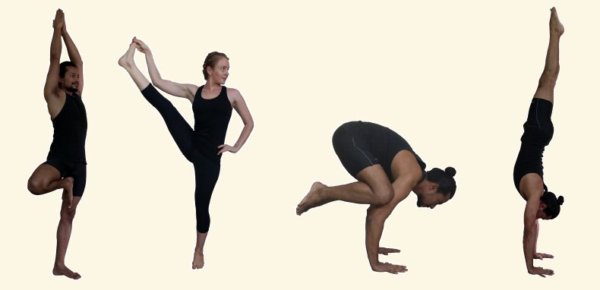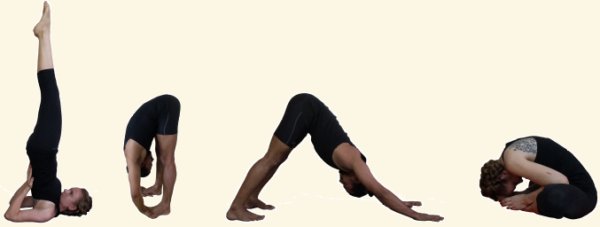Along with pranayama and asana practice, there are some more subtle ways to direct the prana in your body. These are Bandhas. While sometimes we might be automatically doing these bandhas in our asana practice, but to engage them consciously can give you better energetic results. During the asana practice, we train these bandhas and make them strong so that we can use them more effectively while doing pranayama.
Bandhas
Bandha means to hold, tighten or lock, which describes their basic function. We can engage bandhas by contracting specific muscles to encourage energy to flow in different directions in the body.
This is useful as prana (life force energy), has a tendency to flow like electricity, from where there are lots to where there is none. By engaging these locks, we can redirect our prana to the portions of the body, mind, or consciousness that we choose. Bandhas can also be used to store up prana in the body by blocking the flow to certain areas, forcing it to flow to and accumulate in other areas.
You will find that you naturally engage the bandhas when you need a focused or directed energy. Notice the sensations in your body when kicking a ball, coughing, shouting, or trying to go to the toilet when constipated. In yoga and in martial arts we consciously engage these locks to focus our energy and create more power.
During the asana practice as well we keep on using the bandhas because certain asana might demand it. Some asana might demand one particular bandha more than others. Try to consciously engage these bandhas for a better result and for bringing in the meditative aspect. We have also mentioned some asana that strengthens the particular bandha.
Mula bandha – Root lock
Imagine you are on a bus, you need to urinate, and the next stop is in 1 hour. What do you do? You lift and contract the pelvic floor muscles and direct your energy up so that you do not end up sitting in an embarrassing puddle. This upward action is engaging the mula bandha (though you will also be engaging some other muscles).
How to apply?
Sit down, and draw an imaginary diamond shape between the two sit bones, the anus, and the genitals. Then imagine the point at the center of this diamond (for men this is the perineum, for women the opening of the cervix). The idea is to gently lift and contract this area upwards. To learn where the muscle is, it might be easier to start by contracting the entire pelvic floor and slowly releasing the muscles in the anus and genitals.
When practiced along with asana it helps to prevent prana from flowing out of the body downwards and can help to bring lightness and energy to the practice. Both the arm balancing as well as leg balancing might automatically engage this bandha but consciously engaging it might bring better results and ease in doing the postures.
Some postures which strengthen moola bandha

Uddiyana bandha -Flying lock
Uddiyana means flying up or soaring but is sometimes just called the abdominal lock. This is the one we use to cough, sneeze, or even during laughter (again other muscles are used in these actions). Strengthening this center of the body will improve your balance and control over your limbs.
How to apply?
It is done by pulling the lower abdomen (below the navel) inwards and upwards towards the spine. To learn this movement try standing with your heels, shoulders, and buttocks on the wall, and try to draw your lower back towards the wall. You can also try this by lying down on your back and clearing the gap between your lower back and the floor by drawing the lower abdomen in.
This bandha gives you the coordination necessary to jump forward and backward in the vinyasas from ashtanga vinyasa yoga, as well as power in martial arts. The postures which work on the core engage the uddiyana bandha.
Some postures which strengthen the Uddiyana bandha

Uddiyana Bandha Kriya
Sometimes the kriya is confused with the bandha that is used in Ashtanga vinyasa yoga, When done as a kriya we need to exhale completely, hold our breath, expand the chest and pull the abdomen in towards the spine (like a vacuum). You can then move on to practices like nauli. The bandha is less intense and can be maintained while breathing. Check out more details about these practices, Uddiyan bandha kriya, Nauli
Jalandhara bandha- Throat Lock
Jala means a web or trap and dhar means holding. So this is the bandha that helps us to trap and hold the prana inside (and prevent it from flowing out upwards). The strong stimulus on the throat helps to balance thyroid function, but in asana practice, it’s mostly used to try to circulate prana throughout the body.
How to apply?
It is done by lengthening the spine and dropping the chin down to space directly between the clavicles (collar bones). It can be done to hold breath (with the windpipe and esophagus firmly closed) during pranayama or also during a yoga asana practice. When done with yoga asana you keep the breath flowing slowly and with control (it’s a slightly less intense version of the lock). Postures in which the chin touches the chest strengthen and apply the jalandhara bandha.
Postures that apply Jalandhar bandha

Maha Bandha
When all three bandhas are done together then it is called maha bandha. Maha translates to great or highest. This bandha is performed during breath retention. It concentrates the pranas internally and increases the level of energy during periods of inner awareness.
How to apply?
When performing maha bandha work from the top down, starting with jalandhara then uddiyana, and finally mula bandha, and release in the opposite order, only inhaling when the head is fully upright and your spine is completely straight. This bandha is mostly used during pranayama practice while doing kumbhaka (breath retention).
Check out some more free resources on Ashtanga vinyasa yoga.